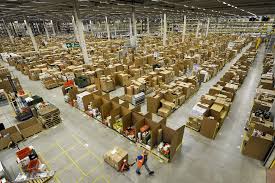Amazon just celebrated its 20th birthday. An amazing growth story for a stock born on May 16, 1997 at $1.50 to $461.19 on July 15, 2015. An impressive growth rate of more than 306 fold or 30,000 %. As a professor in Finance and professional wealth and portfolio manager, I have to justify this gigantic growth to my students and clients. I teach and review different methods for business and stock valuation, yet I wonder how I could explain the current market price for Amazon.

Figure 1 – Historical Stock Price for Amazon since 5/16/1997 to 7/1/2015.
Source – Yahoo Finance
Amazon keeps on creating new ways and methods to increase its customer base. Its Revenue per Share growth rate has been 17.60% for the past 12 months. For the past 10 years, the average Revenue per Share Growth Rate was 29.50% per year. However, the net profit margin which is derived by dividing net income by its revenue for the past three months ending in March 2015 was -0.25%. This figure ranks Amazon lower than 78% of the 892 Companies in the Global Specialty Retail industry, according to Gurufocus.com, a financial quant and analytic website. Moreover, the net profit margin for Amazon in the past ten years has been – 0.44 compared to the industry median for 2.38. It is mind-boggling how Wall Street has been buying into the management narratives promising to make profit sometime in the future for the past 20 years.
Amazon’s hunger to acquire more customers has resulted in a declining operating margin for the past five years, for an average rate of 44.2% per year. Operating margin is a financial ratio which measures a company’s profitability; it is calculated by dividing Operating Income to Revenue. The operating margin for Amazon for the three months ended in March 15, 2015 was only 1.12%.
Discounted Cash Flow (DCF) may be the most popular valuation model used in academia and Wall Street. The DCF model seeks to discount future free cash flows to equity or company with a discount rate. The model assumes even or uneven cash flows growth in the future and discounts them with Weighted Average Cost of Capital (WACC) to calculate the fair or intrinsic value of the company. Typically, DCF values a company with two stages of growth, an initial period of higher growth (super growth) and a subsequent period of lower and stable growth.
In the past ten years, the Free Cash Flow (FCF) for Amazon.com, Inc. has been growing at average of about 12%. (If we assume the company’s FCF would grow at the same rate for the next 10 years, and after that the cash flows would grow at 4% forever. Furthermore, assuming the capital structure would stay the same as we have today, more than $8 billion debt and equity market cap for about $219.6 billion, we calculate an intrinsic value for about $113.00. The current market price is four times of the stock real or intrinsic value. According to any prudent stock analyst and asset manager, no investor should purchase this stock since it is four times more expensive than what it should be, according to DCF model. In fact, this valuation could issue a sell signal based on the company’s fundamentals and financial statements. Aggressive investors may take one step further and short sell the stock for the hope the market price may fall lower than $461.19 for a profit.
The huge difference between Amazon’s intrinsic value and its market value is clearly illustrated by Price to Earnings ratio. The share price for Amazon.com Inc.’s on July 15, 2015 was $461.19, while its diluted earnings per share for the trailing twelve months (TTM) ended in Mar. 2015 was $-0.88. Therefore, Amazon.com Inc.’s P/E ratio for July 15 this year was 524.08. During the past 13 years, Amazon.com Inc.’s highest P/E Ratio had reached a high for 3679.86 with a median for 64.85. For the past 20 years, the company’s management has failed to generate some sustainable positive earnings; then how come Wall Street still expects Amazon to perform a miracle in the future.
In the past ten years, Price/Book Value ratio had a high ratio 79.92, median 13.645 and a low for 8.23 in December 2008. To gain a better perspective, Amazon’s P/B Ratio is ranked lower than 98% of the 865 Companies in the Global Specialty Retail industry, according to Gurufocus.com. In the past 20 years, the Industry Median is 1.77 vs. 20.40.
Amazon’s annual Price to Book Value ratios
![]() Wall Street is ready to advise investors not to fall in love with their stocks when they hold a stock or invest in a company without fundamental merits. Amazon has been a master in creating a loving narrative for investors. Indeed, Amazon is Wall Street illusion at work!
Wall Street is ready to advise investors not to fall in love with their stocks when they hold a stock or invest in a company without fundamental merits. Amazon has been a master in creating a loving narrative for investors. Indeed, Amazon is Wall Street illusion at work!
